It is one of the main and most popular products of the new V20 series of filling equipment.
Functionally, it corresponds to the well-known development - the Borgia V6.5 ampoule filling and sealing machine, which has been serially produced since 2007. The new product has significantly improved specifications and functionality.
The equipment has been developed and mass-produced by the "ROST" company.
The filling line belongs to the category of equipment for small businesses. According to its characteristics, it has no equal among similar devices. At the same time, it fully competes in the quality of sealing with expensive industrial equipment, but significantly surpasses it in terms of basic qualities for the user, such as price, size, weight, energy consumption, maintenance requirements, etc.
It is no coincidence that the Borgia machine is used not only in small businesses. Several large Russian manufacturers of cosmetics, medical, veterinary drugs, plant protection products preferred to use our machines instead of large industrial ampoule sealing lines.
The machine is designed for filling and sealing in ampoules of various liquid preparations. It can be medical and veterinary drugs, pesticides, plant protection products, cosmetics, various technical liquids, including aggressive ones.
The line has the following marking in the ROST specification.
| Equipment name | Description |
| Borgia V20.1 L1-S-2 | Borgia filling line V20, filling of liquid preparations and sealing of ampoules, 1 stream, syringe dispenser, standard metal case. |
| Borgia V20.1 L1-P-2
|
Borgia filling line V20, filling of liquid preparations and sealing of ampoules, 1 stream, peristaltic dispenser, standard metal case. |
In the standard version, ampoules with a capacity of 1.2 5, 10 ml are used. But ampoules of other sizes can also be used. Only the dimensions of the cells of the feeding and receiving reels are changed. The width of the transport line is adjustable by the user.
The choice of the size of the ampoules is carried out by replacing two parts - the feeding and receiving reels. This operation is performed in 10-15 minutes.
The ampoules are filled and sealed in a fully automatic mode. The operator only puts empty ampoules into the hopper. The ampoules are fed, filled, and sealed automatically.
The line has a record small dimensions (824x470x 600mm) and weight (24kg), which is especially important for small businesses.
For the operation of the line, a room with an area of only 6 sq. m. is required.
For example, an ordinary garage or a basement is quite suitable. When using the machine in a “clean zone”, minimizing the operating area is especially important.
The machine features extremely low power consumption - no more than 150 W, which greatly facilitates the use of the machine. Even a 12V car battery can be used to power the machine.
All electronic components of the machine use a voltage of 12 V for power supply, which is formed by a single power supply unit ~ 220 V / = 12 V.
The line capacity is up to 3500 ampoules per hour. It depends on the volume and viscosity of the liquid, on the type of ampoules.
In terms of the quality of ampoule sealing, the line is not inferior to expensive industrial equipment.
The positioning of the needle during filling is carried out with high accuracy, which allows the needle to enter ampoules with necks up to 2 mm in diameter. For example, such.
The liquid is poured with high precision. The machine can use 2 types of dispensers: peristaltic and piston.
Peristaltic dispenser is the main option.
The machine works out the accuracy of the dispenser rotation angle of 0.1 degree.
The widely used dispenser type YZ15 is used with a flow rate from 0.007 to 2280 ml / min.
The dispenser allows the use of tubes with an inner diameter of 0.8 to 7.9 mm. Such a wide range allows the user to optimally choose the compromise between accuracy and filling speed.
There are pipes for aggressive liquids.
Machines with piston dispensers are rarely ordered. As a rule, for filling extremely aggressive liquids.
A standard glass syringe is used as a piston dispenser, which can be easily disassembled, washed, changed.
Here's how it operates.
The use of a peristaltic pump as a dispenser allows you to pour very viscous thick liquids. In this film, the preparation is packed into ampoules with a consistency similar to liquid sour cream or kefir.
The liquid is thick, a drop forms at the end of the pouring needle at the end of the filling. It can break off when the needle is lifted and fall on the neck of the ampoule. The dispenser draws the drop back into the needle. Such a regime exists.
An external dispenser controlled by a time signal can be used in the line.
The machine can operate in stand-alone mode (without a computer) under the control of the built-in central controller.
The controller checks the presence of ampoules at all stages of the technological process. Such intelligent control avoids the troubles associated with mechanical damage to the ampoules, with foreign objects entering the rotating units. If you forget to put the ampoules, the line will simply stop, and will not pour on the table and seal the void.
The line has a built-in voice informant that reports about errors in the operation of the machine and the operator. It also allows you to perform machine diagnostics without a computer.
The machine operates in accordance with the technological parameters (TP). They determine the speed at which the engines rotate, what delays occur in the system, in what modes the individual nodes operate. Some TP are defined by hardware developers, and it is not recommended to change them. Others should be set by the user for a specific task.
The system allows you to store one set of TP in the nonvolatile memory of the machine and use it without a computer. In addition, up to 50 sets of TP can be stored in the computer memory. Almost everything is configured from a computer.
Stepper motors are used as actuators.
The main feature of stepper motors is the ability to rotate at different speeds without losing power, stop instantly, and change the direction of rotation.
Also their unique property is high reliability. Stepper motors have no commutation brushes or other wearing parts. In fact, this is a rotor without windings on a single bearing and a winding mounted in the stator. We have never changed stepper motors even on our first machines almost 20 years ago.
No gearboxes are required for stepper motors. Reels and other mechanical parts of the device are physically placed directly on the shafts of the motors.
Unlike collector motors, stepper motors can rotate at an arbitrarily slow speed without losing power. They instantly stop, if necessary, fix their position. Stepper motors do not have collector brushes, i.e. there is nothing to spark, wear, burn. They work forever.
The equipment also does not contain pneumatic actuators that are difficult to maintain.
Any ampoule filling and sealing line carries out many synchronous movements of mechanical components at different distances with different delays. This is turning the reels, moving the filling needle, lifting the burner, turning the gripper, etc. Time delays and movement parameters determine the process of ampoule sealing. Moreover, we are talking about very small delays of tens of milliseconds.
In standard lines, the following principle is usually used. There is a main engine, with the shaft of which various mechanical units of the line are mechanically connected. And the sequence of their movements and time delays are determined by the setting of mechanical gears, pulleys, etc. This method requires highly qualified mechanics. Nevertheless, the mechanical components of the system are interconnected and depend on each other's settings.
In our equipment, each mechanical unit has its own stepper motor, does not depend on the others and is configured by a computer. For example, the following parameters can be configured for each stepper motor.
It especially facilitates the setting due to the property of the machine - to change technological parameters during operation. The machine works, produces ampoules, and at this moment you change, for example, the annealing time and you see how this affects the quality of the sealing.
As a result, the machine is easy to maintain. Only one operator is required for operation.
Preventive maintenance is carried out by a technician with minimal mechanical skills. The actual maintenance of the device is reduced to one requirement - to keep the equipment clean.
The line has a convenient diagnostic system. It allows even an inexperienced operator to easily determine the status of any node in the line. The current status of all hardware components is displayed on the screen of a computer, terminal, or tablet. For example, by rotating the feed reel with your hand, you can see on the screen whether the sensor of this unit is triggered.
In the event of a malfunction, the voice informant will report the reason for the stop and advise the operator on further actions.
It is planned to develop alternative methods of machine control to a computer: tablet, smartphone, external terminal. How it was done for the Borgia line 6.5.
The machine body is made of 2 mm thick stainless steel. It is equipped with a hopper of empty ampoules with a feeding reel, a transport line, a filling unit, a receiving reel, a burner with a lifting unit, a manipulator for capturing the necks of ampoules.
All mechanical components are corrosion resistant even in aggressive environments.
Electronic control system of the machine.
The machine control system consists of a central controller and peripheral controller boards of the same type.
The peripheral controller is a small board to which the following can be connected:
- 1 stepper motor;
- 4 discrete sensors;
- 2 PWM switch.
There are separate connectors for each of these components.
Peripheral controllers are interconnected by a loop of 4 wires: 2 power lines and a twisted pair for information transfer.
Thus, the assembly of the electronic part of the machine is reduced to installing controllers, connecting them to each other and the central controller using a loop, and connecting sensors, motors, electromagnets.
As a result of this configuration, there are no huge cables in the machine, into which the wires for connecting sensors or motors "dive" and emerge from the cables in an unknown place. The new equipment has only one cable and wires for connecting electrical components to separate board connectors.
Peripheral controllers allow very flexible motor control.
The following parameters are set programmatically for each motor:
- Operating current: 20%, 50%, 75%, 100%.
- Stop hold current: 0%, 20%, 50%, 75%, 100%.
- Phase switching mode: step, half step, micro step 1/8, micro step 1/16.
- Rotational speed.
All these parameters are set in software for each motor, without using jumpers.
Voice informant.
A voice informant is installed in the line. The control panel has a help button. By pressing it, a pleasant female voice informs about the state of the machine, problems, if any, and how to fix them.
A voice informant is not a way to make an impression, but a really necessary component of the system. The state of the machine, its malfunctions, and earlier could be determined using the upper-level program. But few of the users are willing to deal with this. For example, contact with the feed sensor will bounce off and the machine does not stop the ampoule feeding. Usually they call us and ask what to do. In new equipment, with the same error, it is enough to press the help button and the machine will report the following information:
“The machine is waiting for the end of feed 1. If the feed reel 1 does not rotate - check the wires and the motor connector. The engine rotates - the reception sensor is faulty or not adjusted. This is an electromechanical limit switch. It is located on the top of the table at the end of the transport line, near the receiving reel. The sensor must be adjusted so that it is triggered when the ampoule enters the cell of the receiving reel."
And so for all potential situations.
There is a diagnostic mode in the voice informant. All sensors are tested in it sequentially. Information about the sensor, its location, and then the current state of the sensor is reported. When the state of the sensor changes, its new state is reported. Thus, to diagnose the sensor, you must click on it and hear that the sensor is pressed. Then release and hear that the sensor is pressed.
Top-level software.
The machine is configured using the top-level program (on a computer).
In the main window, all equipment components are schematically displayed: motors, sensors, electromagnets. They are grouped into blocks - processes. The program shows the current state of each component and process.
Each process block has a button for editing technological parameters. For example, the editor of technological parameters for the annealing process looks like this.
There are many parameters, so the editor in the new program is divided into separate windows associated with processes.
Each parameter can be temporarily loaded into the random access memory (RAM) of the machine for verification. All parameters can be written to a file or loaded into the permanent memory (FALSH) of the machine.
The line has received all the necessary permits for work, both with technical fluids and with medications. They are collected on a separate page of the site.
The equipment price is much lower than its functional counterparts (5800 $).
The machine specifications.
| Productivity | Up to 3500 ampoules per hour. |
| Sizes of ampoules | 1, 2, 5, 10 ml, non-standard sizes. |
| Dosage | Any, determined by technological parameters, possibility of reversible dispenser operation. |
| Power supply | Single-phase AC network, voltage 220 V. |
| Power supply frequency | 50 Hz |
| Power consumption | No more than 150 W. |
| Burner gas | Propane + oxygen it is possible to use a hydrogen generator. |
| Overall dimensions | 860 x 480 x 350 mm. |
| Weight | No more than 18 kg. |
The Borgia ampoule filling and sealing line has several modifications with additional functionality. Here are their designations.
The team of the company” ROST " includes experienced developers in the field of electronics, mechanics, programmers. We do not use partners in the development of intelligent elements of our systems. We don't want to depend on anyone.
We own all the information, and we can modernize, adapt, and modify all our products ourselves.

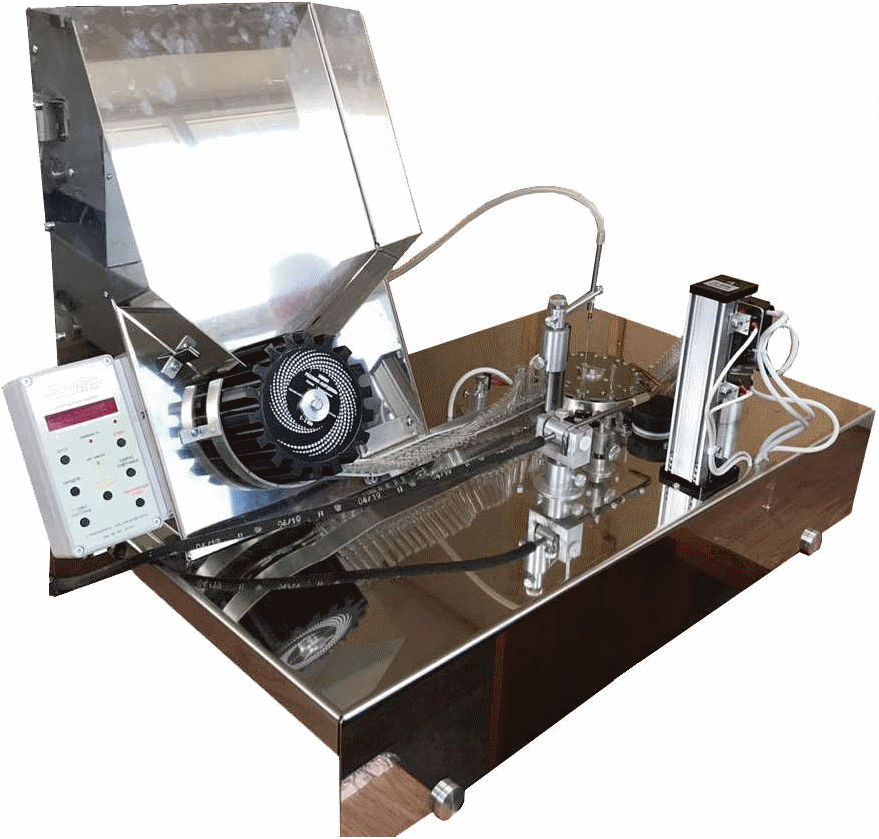
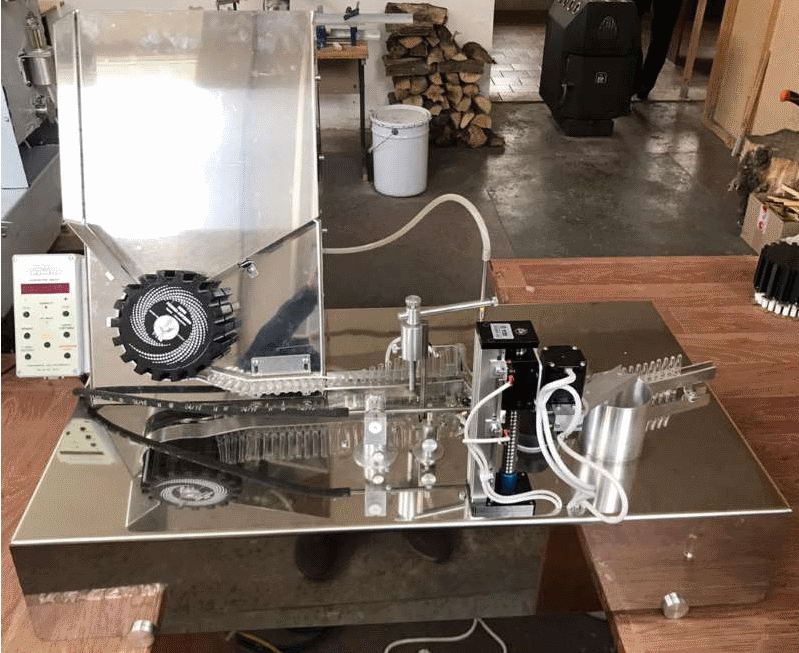
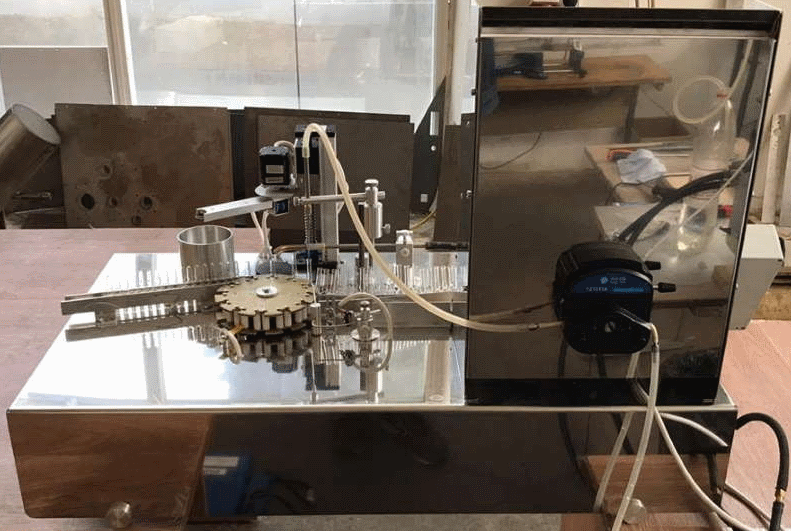
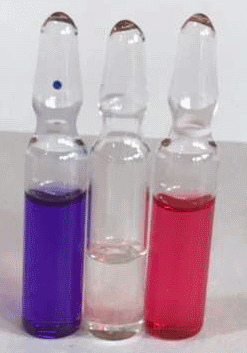
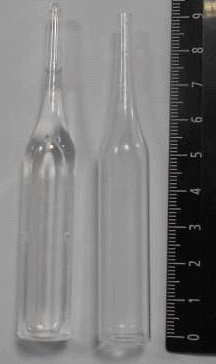
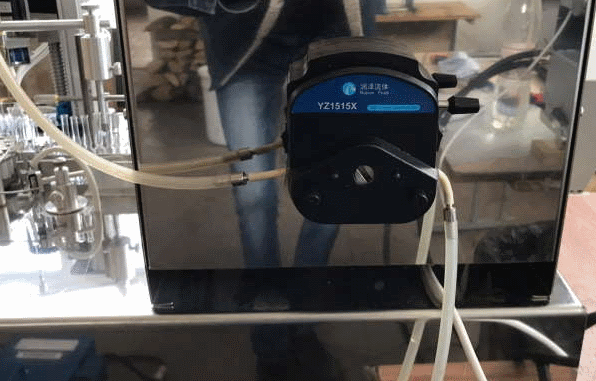
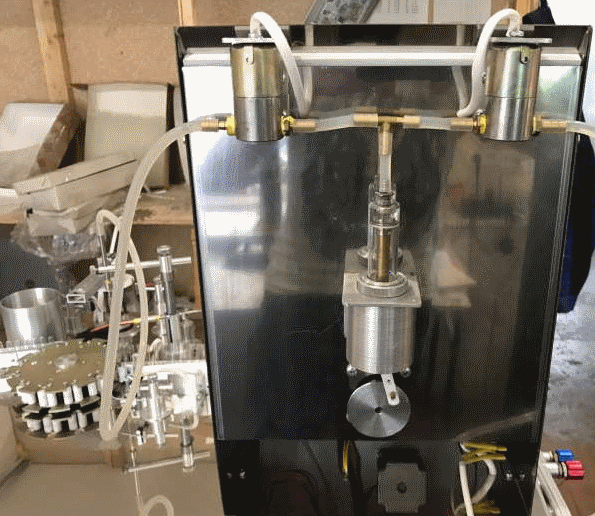
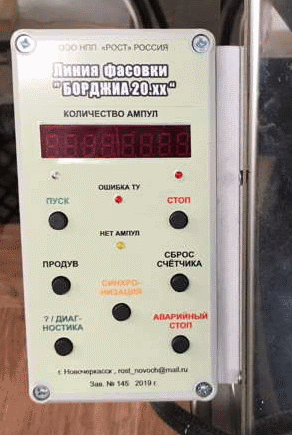
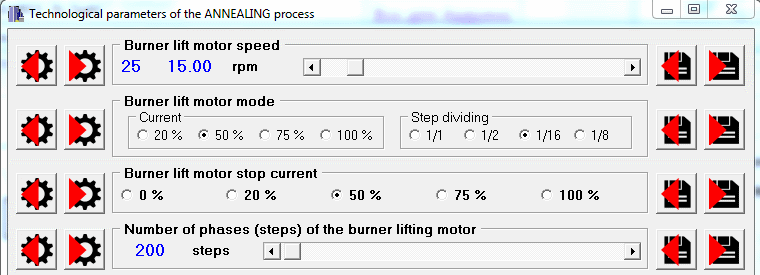
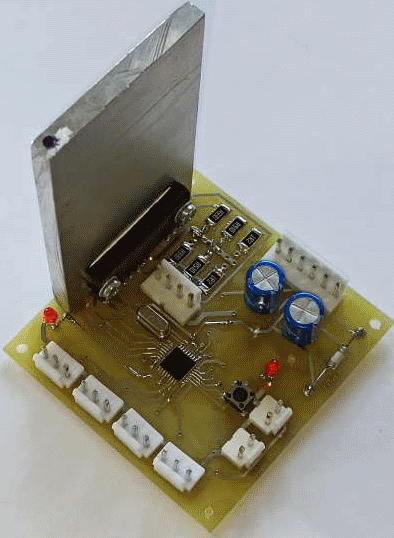
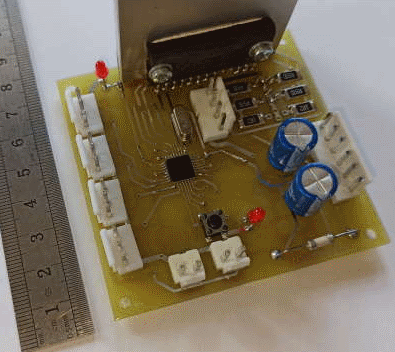
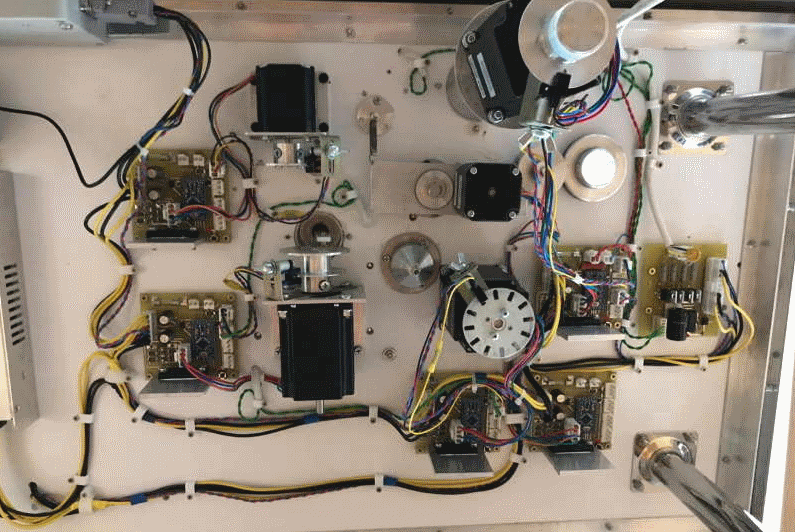
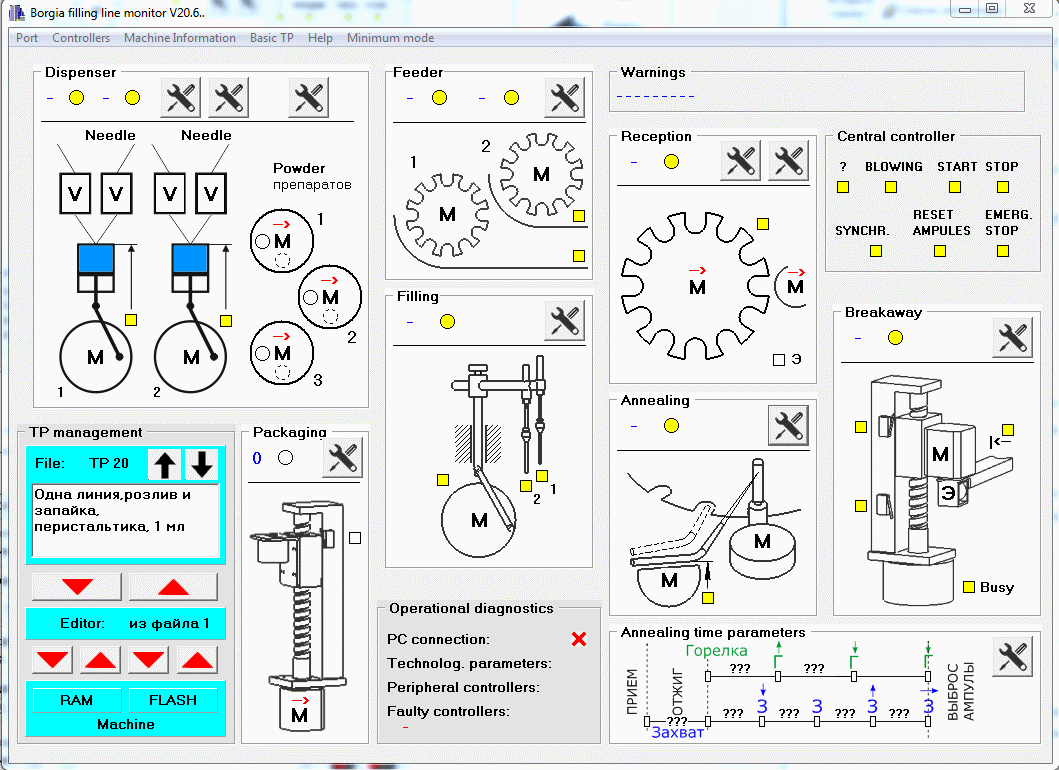
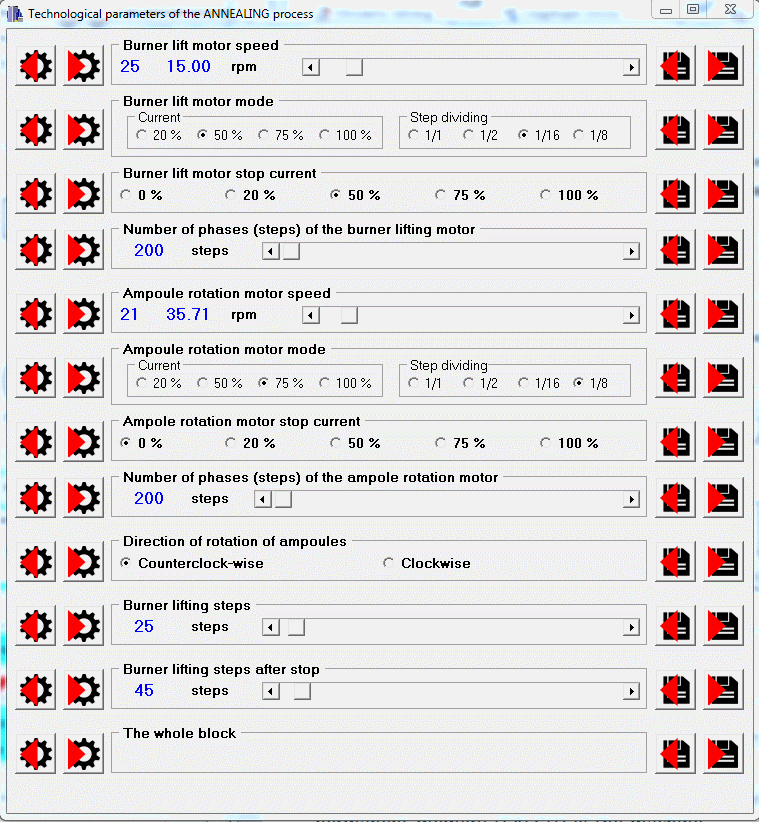
I would like to order 1 machine.